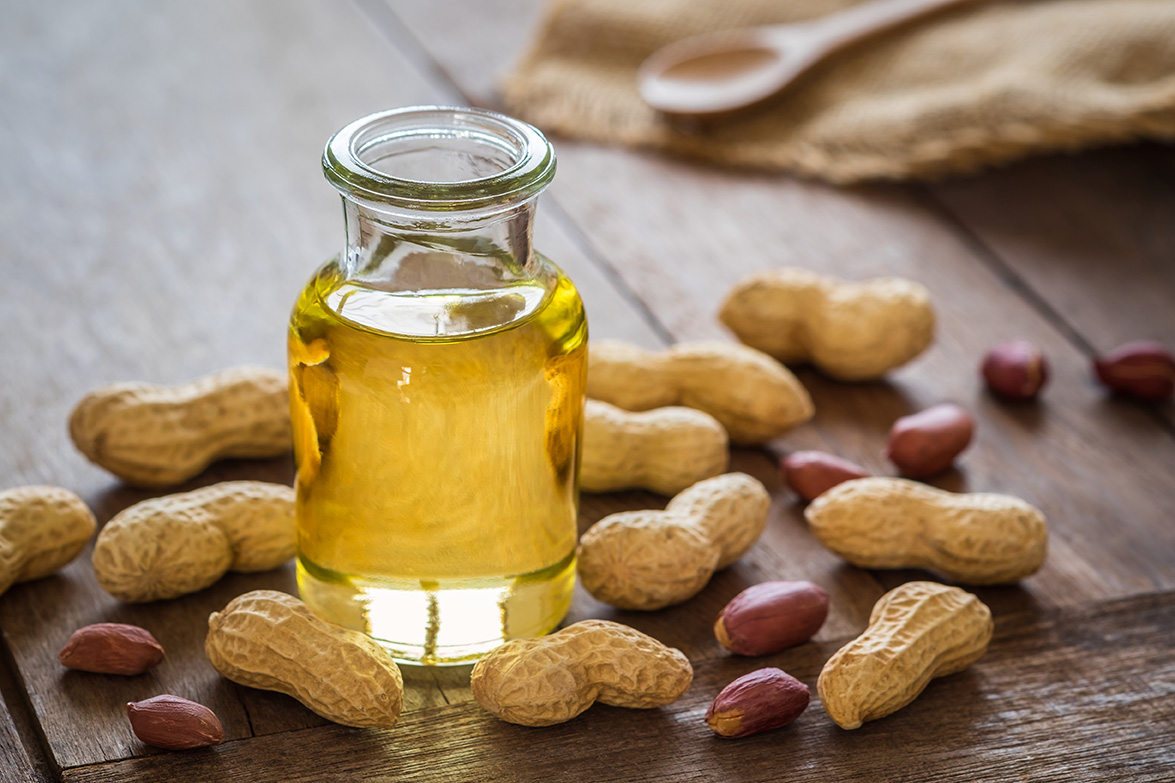According to TechSci Research report, “Global Peanut Oil Market – Industry Size, Share, Trends, Competition Forecast & Opportunities, 2029”, the Global Peanut Oil Market stood at USD 2.55 billion in 2023 and is anticipated to grow with a CAGR of 4.5% in the forecast period, 2025-2029. The global peanut oil market is influenced by various factors such as production trends, consumption patterns, key players, market dynamics, and regional variations. China, India, and the United States are among the largest producers and consumers of peanut oil. The market is driven by the growing demand for healthy edible oils, increasing consumer awareness about the health benefits of peanut oil, and its diverse applications in food preparation and the food industry.
Peanut oil, derived from peanuts, is known for its high smoke point, making it suitable for various cooking methods like frying, roasting, and sautéing. It contains monounsaturated fats and other beneficial nutrients, making it a preferred choice for health-conscious consumers. Additionally, its wide availability and relatively lower cost contribute to its popularity in the culinary world.
Browse over 26 market data Figures spread through 181 Pages and an in-depth TOC on “Global Peanut Oil Market” – https://www.techsciresearch.com/report/peanut-oil-market/21550.html
Factors like changing dietary preferences, lifestyle alterations, health consciousness, and the rising trend of natural and organic products impact the demand for peanut oil. However, market growth can be hindered by fluctuations in peanut production due to weather conditions, disease outbreaks affecting peanut crops, and market price volatility affected by supply and demand dynamics.
The peanut oil market operates through various distribution channels including supermarkets/hypermarkets, convenience stores, online retail, and specialty stores. Manufacturers often focus on product innovation, packaging strategies, and marketing campaigns to attract consumers and gain a competitive edge in the market.
Furthermore, the global peanut oil market faces challenges regarding regulatory norms, quality standards, and environmental concerns associated with production and processing methods. Sustainability practices, organic certifications, and efforts to ensure ethical sourcing of raw materials are becoming increasingly important for market players to maintain consumer trust and meet regulatory requirements.
The market is also influenced by trade policies, import-export dynamics, and geopolitical factors impacting the production and distribution of peanut oil across different regions. Global trade patterns, tariffs, and trade agreements play a significant role in shaping the market landscape.
The global peanut oil market is a dynamic and multifaceted sector influenced by numerous factors ranging from consumer preferences to geopolitical issues. Its growth trajectory is tied to changing dietary habits, health consciousness, technological advancements in production methods, and market strategies adopted by key players in the industry.
The global peanut oil market is segmented into type, application, distribution channel, and region.
Based on type, the refined segment has asserted its dominance in the global peanut oil market. Refined peanut oil offers a higher smoke point, longer shelf life, and a more neutral flavor compared to its unrefined counterpart. This makes it exceedingly popular among consumers and food manufacturers alike, especially in regions where a versatile cooking oil is in high demand. The refining process eliminates impurities, free fatty acids, and allergens, enhancing the oil’s stability and suitability for various culinary applications. Additionally, the refined segment aligns well with the growing health-conscious consumer base seeking oils with lower saturated fats and cholesterol levels. The consistent quality, extended shelf life, and the ability to withstand higher cooking temperatures make refined peanut oil the preferred choice in the food industry for frying, baking, and as a base for numerous food products. Its dominance is further strengthened by the robust infrastructure supporting the refining processes and the ability to cater to diverse market needs efficiently.
Based on region, Asia Pacific holds a significant position in the global peanut oil market. The region is a powerhouse, contributing substantially to the overall market dynamics. Countries like China and India are major players, boasting extensive cultivation and processing capabilities for peanuts, the primary source of peanut oil. In this region, the consumption of peanut oil is deeply ingrained in culinary traditions, making it an integral part of various cuisines. Its versatility in cooking, from stir-frying to deep-frying, gives it a central role in many Asian dishes. Moreover, the use of peanut oil spans beyond households; it’s a prominent ingredient in foodservice and food processing industries.
Asia Pacific’s dominance is further fueled by a rising population, urbanization, and increasing disposable incomes. These factors contribute to a growing demand for convenient and healthy cooking oils, where peanut oil stands out for its perceived health benefits.
Major companies operating in global peanut oil market are:
- Ventura Foods
- Cargill
- Archer Daniel Midland
- Olam International
- Wilmar International
- General Mills
- Hain Celestial Group
- Associated British Foods
- Parrish and Heimbecker
- FreshMill Oils
Download Free Sample Report – https://www.techsciresearch.com/sample-report.aspx?cid=21550
Customers can also request for 10% free customization on this report.
“The global peanut oil market has witnessed steady growth owing to its versatile applications in the food industry and its nutritional value. Peanut oil, derived from groundnuts, serves as a prominent cooking medium due to its high smoke point and distinct flavor profile. Its popularity extends beyond culinary use, finding applications in cosmetics, pharmaceuticals, and as a biodiesel feedstock. Asia-Pacific leads in consumption and production, with China and India being major contributors. The rising demand for natural and healthy cooking oils, coupled with the expanding food industry, propels market growth. However, fluctuating peanut crop yields due to weather conditions, allergen concerns, and the emergence of alternative oils pose challenges. Consumer awareness regarding health benefits, coupled with technological advancements in oil extraction processes, is expected to fuel market expansion. Moreover, increasing disposable income and changing dietary preferences across regions contribute to the market’s upward trajectory, presenting opportunities for innovation and market penetration.” said Mr. Karan Chechi, Research Director with TechSci Research, a research-based management consulting firm.
“Peanut Oil Market – Global Industry Size, Share, Trends, Opportunity, and Forecast, Segmented By Type (Refined, Unrefined), By Application (Pharmaceuticals, Food items, Skincare products, and Others), By Distribution Channel (Online and Offline), By Region, By Competition, 2019-2029, has evaluated the future growth potential of global peanut oil market and provides statistics & information on market size, structure and future market growth. The report intends to provide cutting-edge market intelligence and help decision makers take sound investment decisions. Besides, the report also identifies and analyzes the emerging trends along with essential drivers, challenges, and opportunities in the global peanut oil market.
Download Free Sample Report – https://www.techsciresearch.com/sample-report.aspx?cid=21550
Contact Us-
TechSci Research LLC
420 Lexington Avenue, Suite 300,
New York, United States- 10170
M: +13322586602
Email: [email protected]
Website: www.techsciresearch.com





